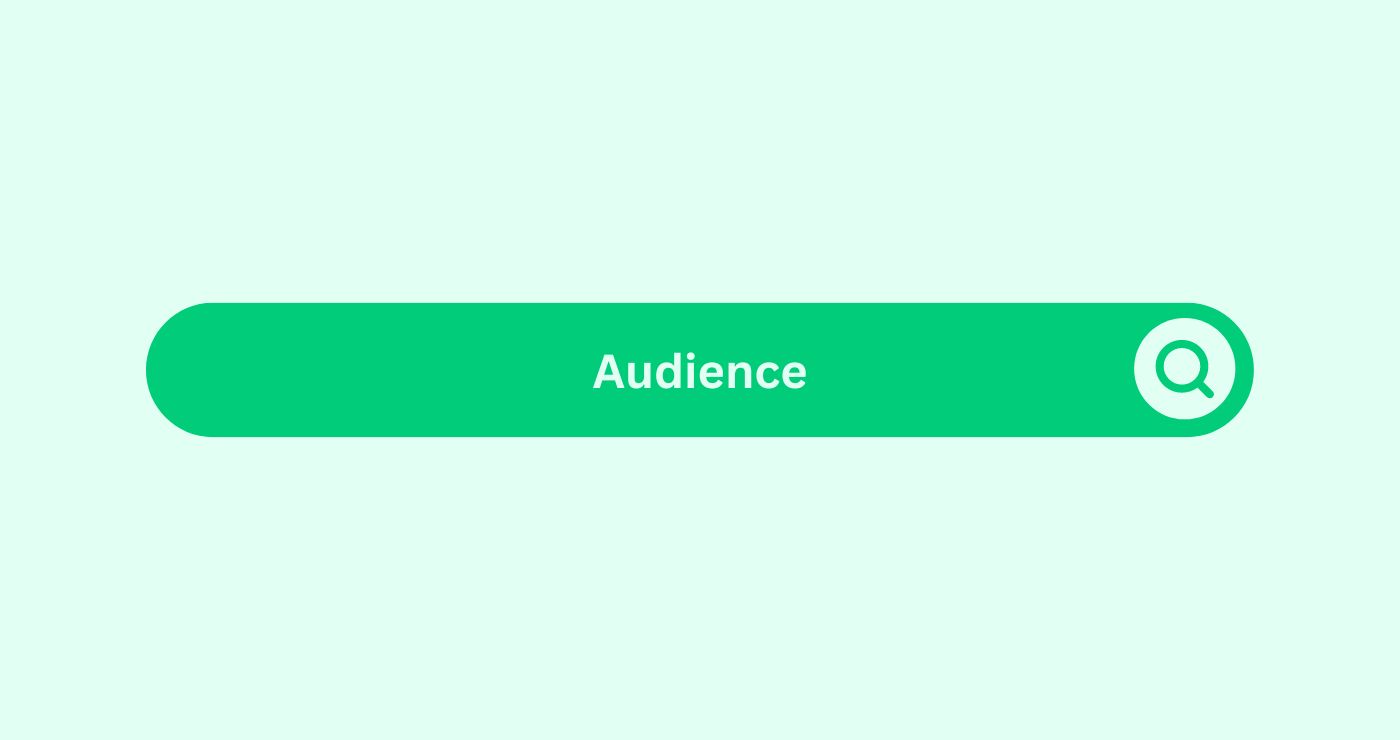Definition
The term “Audience” refers to the group of individuals who visit a website or consume its content. It encompasses various demographic, geographic, and psychographic attributes that help businesses understand and target specific user segments.
Example of how you can use Audience
An example of leveraging Audience is by analysing website trafficDefinition In the context of SEO (Search Engine Optimisation... data to identify the primary demographic groups visiting a site. This information can be used to tailor content, products, or services to better meet the needs and preferences of the target audience.
Key Takeaways
- Understanding User BehaviourDefinition What is User Behaviour in Social Media Marketing?...: Analysing audience data helps in understanding user behaviourDefinition What is User Behaviour in Social Media Marketing?..., preferences, and interests.
- Targeted Content Creation: Tailoring content to suit the interests and needs of specific audience segments improves engagementDefinition Engagement in content marketing refers to the deg... and conversionDefinition In the realm of SEO, Conversion refers to the pro... rates.
- Refining SEO Strategies: Audience insights inform keyword targeting, content optimisation, and marketing strategies to attract relevant trafficDefinition In the context of SEO (Search Engine Optimisation....
- Personalised User Experience: Utilising audience data enables the delivery of personalised user experiences, leading to higher satisfaction and retention.
- Continuous Optimisation: Regularly monitoring audience metricsWhat are Metrics in the context of SEO? Metrics in SEO refer... allows for ongoing optimisation of SEO efforts to better resonate with target audiences.
FAQs
How can I determine my website's target audience?
Conduct market research, analyse website analyticsDefinition In SEO, analytics involves collecting, measuring,... data, and create customer personas based on demographic, geographic, and behavioural attributes to identify your target audience.
What are some tools for audience analysis in SEO?
Google AnalyticsDefinition In SEO, analytics involves collecting, measuring,..., Google Search ConsoleDefinition Google Search Console is a free web service from ..., social mediaWhat is Social Media? Social media refers to online platform... insights, and customer relationship management (CRM)Definition Customer Relationship Management (CRM) is a techn... tools are commonly used for audience analysis in SEO.
How can I segment my audience for better targeting?
Segment the audience based on demographicsDefinition Email demographics provide statistical data on su..., interests, behaviours, and buying stages to create tailored content and targeted marketing campaigns.
Why is audience analysis important for SEO?
Audience analysis helps in understanding user intent, optimising content for relevant keywordsDefinition Keywords are crucial for SEO success as they conn..., improving user experience, and increasing conversionDefinition In the realm of SEO, Conversion refers to the pro... rates.
How can I attract a larger audience to my website?
Utilise SEO strategies such as keyword optimisation, content marketingDefinition Content marketing strategically creates and share..., link buildingDefinition Link building, within the context of content mark..., and social mediaWhat is Social Media? Social media refers to online platform... promotion to attract a larger audience to your website.
What are some metrics to track for audience analysis?
MetricsWhat are Metrics in the context of SEO? Metrics in SEO refer... like demographicsDefinition Email demographics provide statistical data on su..., geographic location, trafficDefinition In the context of SEO (Search Engine Optimisation... sources, behaviour flow, bounce rateDefinition Bounce Rate in social media marketing refers to t..., and conversion rateDefinition Conversion Rate in the SEO space refers to the pe... provide valuable insights for audience analysis.
How can I improve audience engagement on my website?
Create high-quality, relevant content, optimise website usability and navigation, encourage interaction through comments and social sharing, and personalise user experiences to improve audience engagementDefinition Engagement in content marketing refers to the deg....
How can I use audience data to improve SEO rankings?
By understanding audience preferences and behaviours, you can create content that resonates with your target audience, leading to higher engagementDefinition Engagement in content marketing refers to the deg..., longer dwell times, and improved SEO rankings.
How do I measure audience satisfaction on my website?
Conduct surveys, analyse feedback, monitor time on pageDefinition In the realm of SEO, time on page refers to the a..., pages per sessionDefinition Pages Per Session (PPS) is a crucial metric in SE..., and repeat visits to gauge audience satisfaction and identify areas for improvement.
What are some common audience segmentation strategies?
Common audience segmentation strategies include demographic segmentation (age, gender, income), geographic segmentation (location), psychographic segmentation (lifestyle, interests), and behavioural segmentation (purchase history, browsing behaviour).




